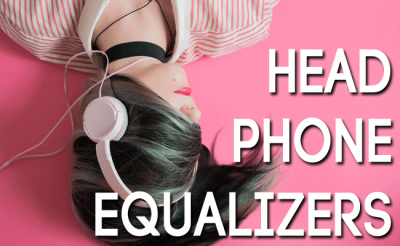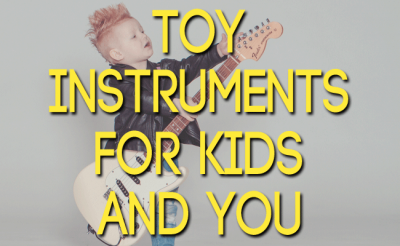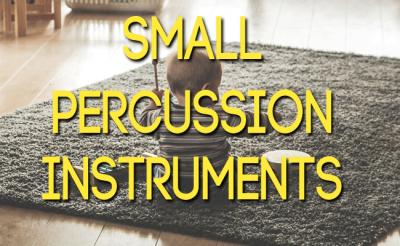DIY Acoustic Panels
How to Build Stylish Sound Absorbers <$30
 A quick guide on how to build your own DIY acoustic panels for your studio or bedroom.
A quick guide on how to build your own DIY acoustic panels for your studio or bedroom.
A while ago a buddy of mine and me were building some (what I found stylish) absorbers and they turned out to be quite cheap compared to what you can buy in the store. I’d like to share the method with you here as it is very versatile and allows you to construct panels for your individual needs. I also link to products on amazon so that you don’t even have to move your *** to the store and the parts can get delivered to you while you keep on working on your next hit single :-). What a world we live in! Feel free to experiment with the concept and share pictures below. I will add them to the end of the article.
The Result


Step 1: The Quarter Wavelength Rule
Before we get started we need to be clear on what we are going to use our DIY acoustic panels for. In what context are you going to use it? What sound sources are you intend to absorb with the panels?
it’s important to know that the thickness of the material or the distance of the material to the wall are defining how low of a frequency the absorber can reduce. As a rule of thumb the industry says, not less than the quarter (25%) of the wavelength (λ) in absorption material thickness or distance to reflection point must be applied to impact the frequency.
Let’s say you use an absorber in a vocal booth. The lower frequency range of a female vocalist goes down to 200 Hz. According to the Wavelength Calculator the wavelength of 200 Hz is 1.72 meters. 25% of that boils down to 37.5 cm (14.78 inch). That’s a-lot! We could distance one absorber 37 cm away from the wall but we’ll never build one that thick.
To be realistic a DIY acoustic panel as described in this article is roughly 12 cm (4,7 inches) thick which will reduce frequencies 700 Hz and above. With a slight distance from the wall we can make it 17 cm and 500 Hz. Below that we will have to look for bass trap solutions.
Check out the Wavelength MIDI Note Table I made for further references on which musical note relates to which wavelength. Also see the EQ instrument table to know which frequencies are relevant for specific instruments. In the table below you’ll find a brief overview over some frequencies and their respected wavelength and quarter wavelengths.
| Frequency (Hz) | λ m/inch | λ/4 m/inch | Example |
|---|---|---|---|
| 80 Hz | 4.3 m / 169.5 inches | 1.07 m / 42,37 inches | Bass note of low male vocalist |
| 200 Hz | 1.7 m / 67.8 inches | 0.43 m / 16,9 inches | Bass note of female vocalist |
| 500 Hz | 0.68 m / 27 inches | 0.17 m / 6,75 inches | Mid-range of a guitar |
| 700 Hz | 0.49 m / 19 inches | 0.12 m / 4.75 inches | Snare attack |
| 1000 Hz | 0.34 m / 13.5 inches | 0.085 m / 3.375 inches | Personality of voice, attack of kick-drum |
| 2000 Hz | 0.17 m / 6.8 inches | 0.045 m / 1.7 inches | Presence of voice, percussion sounds |
Step 2: Choosing the Absorption Material
Now that we have the math out of the way, let’s figure out which material is best for you. As we will cover up the absorption material with fabric we don’t need to worry about the aesthetic of it.
Before we jump in here are two terms that you should know about when it comes to buying sound proofing material:
- NRC: Noise Reduction Coefficient (1 is perfect absorption and 0 is perfect reflection)
- Density (kg/m³) The denser, the greater the reduction
- Porosity (the bigger the gaps in the material the better the absorption. Only holds true up to 1250 Hz)
If you want to go more into detail on this topic check out this paper on noise absorption materials.
For the panels you see in the pictures above I used absorption plates that were disposed from an old music school so I didn’t have to buy new ones. Maybe you can get old but free Fiberglass or Rockwool when someone is moving or building.
If you want to buy new ones here are a couple of material options from amazon. Be aware about the NRC number and the thickness of the plate.
Height: 1,21 m | 48″
Width: 0,6 | 24″
Thickness: 5 cm | 2″
Density: 8lb per unit density
NRC: High (not further specified)
Price Per Pack: $74,99 (6pc)
Price Per Piece: $12,5
Comment: Very good reviews on amazon. has other thickness variations available: 2,5cm | 1 inch – 10 cm | 4 inch
Height: 1,21 m | 48″
Width: 0,6 | 24″
Thickness: 5 cm | 2″
Density: 3 pounds per cubic foot
NRC: 1
Price Per Pack: $67 (6pc)
Price Per Piece: $11,2
Comment: Good reviews on amazon. Rigid fiberglas type 703, read this paper for more details. Is also available in other thicknesses: 2,5cm | 1 inch – 10 cm | 4 inch
Step 3: Building the Frame
The next step is to choose the right lumber boards to build the frame. Personally, I went to a local DIY store and bought scaffolding wood planks and cut them at the store to the fitting measures. For the absorption plates I recommended above there are two options I found on Lowes that would be a good match.
Thickness: 1,9 cm | 0,75 inch
Width: 14cm | 5,5 inch
Length: 1,21 m | 48 inch
Price Per Plank: $4,68
Price Per 48 inch: $4,68
Thickness: 2,8 cm | 1,5 inch
Width: 14cm | 5,5 inch
Length: 2,43 m | 96 inch
Price Per Plank: $4,98
Price Per 48 inch: $2,49
The advantage of the tight grained lumber is that it’s cheaper but the spruce pine fir board is thinner and therefore lighter. Let’s pick the lumber for now. With three planks we can build two frames which adds up to ~$7,5 per frame.
Concerning the cutting and length of the planks be careful that the acoustic panels are 48 inches long and 24 wide. You have two options. Mounting the horizontal 24 inch planks on the inside of the 48 inch planks. That would require you to cut off twice the thickness of the wood planks from the acoustic panels. The second option is to mount the 24 inch planks on top of the 48 inch planks. This would require you to increase the length of the 24 inch plates by twice thickness of the planks. Here is a quick recap overview using the spruce pine fir boards:
- Option 1: 2 x (48 inch planks) + 2 x (24 inch planks) – cutting acoustic panel height by 2 x 1,5 inch (thickness of planks)
- advantage: No leftovers from the planks
- disadvantage: Shortening the acoustic panels
- Option 2: 2 x (48 inch planks) + 2 x (24 + 3 inch planks)
- advantage: No cutting of the acoustic panels
- disadvantage: Leftovers from the planks

Corner Braces
Even though you could screw the frame together directly I would recommend you use corner braces like those ones because it gives the frame much more stability. Additional cost per frame is $2,8. As you can see on the picture to the left I mounted the braces on the outside, but I would now screw them to the inside of the frame. Learn from my mistakes!
Step 4: Stapling the Fabric
Once you finished the frames it’s time to add the fabric onto one side to give it the stylish look. Before we compare options let’s get some clarity on the measurements.
Length per frame:
48 inch + 2 x 5,5 inch (width of planks) + 5 inch (for stapling) = 64 inch
1,21 m + 2 x 0,14 m (width of planks) + 0,12 m (for stapling) = 1,62 m
Width per frame:
24 inch + 2 x 5,5 inch (width of planks) + 5 inch (for stapling) = 40 inch
0,61 m + 2 x 0,14 m (width of planks) + 0,12 m (for stapling) = 1,01 m
Content: 20% Cotton and 80% Polyester Blend
Width: 1,52 m | 60 inch
Length: By the yard
Price Per Yard: $4,60
Price Per Per Absorber: $9,20
Content: 100% Polyester and No Stretch, Molt resistant
Width: 1,52 m | 60 inch
Length: By the yard
Price Per Yard: $5,49
Price Per Per Absorber: $10,98
Content: 100% Cotton
Width: 1,11 m | 44 inch
Length: By the yard
Price Per Yard: $3,98
Price Per Per Absorber: $7,96
Staple Gun-Fun
Now grab a staple gun and get to work. Make sure to tighten the fabric and already insert the absorber plates to avoid buckling. This process is best done with a little help from a friend. Depending on how OCD you are nicely fold the fabric in the corner like shown below. Most importantly, have fun with the staple gun but be careful please.


Step 5: Putting it all together
By now your diy acoustic panel should look something like this↘. If not, well read the manual again, I’m sorry. To hang up the sound absorber you can use the corner braces again. Just mount two at a wall and rest the top plank on it. If you want more distance to the wall try screwing extra wood blanks on the inside corners. And that’s how you build your own sound absorber. Congratulations.


Price Overview
To wrap it up here is a brief overview of how much one absorber will cost you.
- $11,2 for a 2 inch Fiberglass Plate
- $7,47 for 144 inch of Tight Grained Lumber
- $2,8 for 4 Corner Braces
- $7,96 for 100% Cotton Fabric
Total: $29.16 per DIY acoustic panel















Leave A Comment